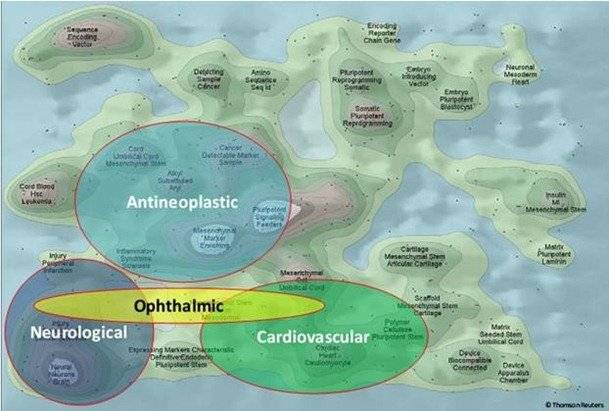Introduction
This post discusses the order dated 29 January 2025 in Caleb Suresh Motupalli (hereinafter as “Caleb”) Vs. Controller of Patents (hereinafter as “Controller”), wherein the Madras High Court decided an appeal filed by Caleb against an order-in-review issued by the Controller. Caleb’s invention dealt with integrating human intelligence with AI to enhance human capabilities. The Court concluded that the appeal was not maintainable under Section 117-A of the Patents Act and found no grounds to overturn the Controller’s decision. The Court strongly opined that the invention lacked sufficient technical detail, clarity, inventive step, and failed to demonstrate patentable subject matter, rendering it non-patentable under the statutory requirements.
Facts
Caleb filed a patent application titled ‘Necktie Persona-Extender/Environment-Integrator and Method for Super-Augmenting a Persona to Manifest a Pan-Environment Super-Cyborg,’ before the Indian patent office bearing number 5606/CHENP/2012 as a national phase application under the Patent Cooperation Treaty, claiming priority from a US application. The First Examination Report (FER) raised objections related to inventive step, industrial applicability, and non-patentability under various sections of the Patents Act. In response, a first hearing notice followed, raising further objections, which led to hearing and subsequent submissions by Caleb. The Controller issued a decision maintaining the objections. Caleb then filed a review petition, resulting in a second hearing notice and a subsequent hearing. The Controller issued a final order-in-review on October 27, 2021, rejecting the application.
Caleb’s arguments
Caleb argued that the invention offered a groundbreaking solution to the challenges posed by advancing AI technologies by non-invasively integrating human intelligence with AI, thereby enhancing human cognitive and physical capabilities to create “human 2.0.” Caleb asserted that the specification provided sufficient disclosure for a person skilled in the art (PSITA) to implement the invention and that the claims were clear, precise, and fairly based on the original disclosure. Caleb claimed that the invention met the criteria under Sections 3(k) and 3(m) of the Patents Act, as it involved tangible technical effects and could not be reduced to mere mental steps or abstract algorithms. To substantiate the arguments, Caleb relied on Novartis AG v Union of India (2013) 6 SCC 1, emphasizing that sufficiency of disclosure must be assessed from the perspective of a person skilled in the art. Caleb also cited In re Naquin, 398 F.2d 863, arguing that interdisciplinary inventions require a team of skilled persons across multiple fields. Further, Caleb referred to Ferid Allani v Union of India and Ors., 2019 SCC Online Del 11867, and the Computer Related Inventions (CRI) Guidelines, 2017.
Controller’s arguments
The Controller argued that the Caleb’s invention lacked an inventive step and failed to provide sufficient technical details for implementation. The Controller contended that the claims were vague, overly broad, and relied on undefined terms and ambiguous concepts, making them non-patentable. Additionally, the Controller emphasized that the invention did not transform an abstract idea into a patent-eligible application and that the claimed features were already disclosed in prior art documents.
Issues
- Whether the invention met the sufficiency of disclosure requirements under Section 10(4)(a) of the Patents Act.
- Whether the claims were clear, succinct, and fairly based on the specification as required under Section 10(5).
- Whether the invention involved an inventive step and was non-obvious in light of prior art.
- Whether the invention was patent-eligible under Sections 3(k) and 3(m) of the Patents Act.
Analysis:
Regarding sufficiency of disclosure under Section 10(4)(a), the Court found that the invention lacked the necessary technical detail to enable a person skilled in the art to implement it without undue experimentation and that the invention was overly abstract, and critical operational elements were insufficiently described. Relying on No-Fume Ltd v Frank Pitchford & Co Ltd (1935), the Court opined that the best mode of performing the invention must be disclosed.
Regarding the clarity and conciseness of the claims under Section 10(5), relying on C Van Der Lely NV v Ruston’s Engineering Co Ltd [1993], the Court emphasized the necessity for claims to be clear and supported by the specification.
Regarding inventive step, the Court upheld the Controller’s reliance on prior art references, including patents related to AI integration technologies. The Court stated: “On carefully examining the complete specification and the relevant prior art documents, I find that the appellant has merely coalesced the disclosures and discussions in the patent and non-patent literature, which largely relate to harnessing AI capabilities for advancing human operations, to arrive at the claimed invention.”
Regarding patent eligibility under Sections 3(k) and 3(m), the Court held that the invention did not meet the criteria for patentable subject matter as it was directed to an abstract idea related to algorithms and mental steps, lacking any tangible technical effect or hardware implementation. The Court stated: “The claimed invention addresses the problem of loss of human agency because of increase in AI capabilities by purportedly integrating objects with humans, extending the humans out, and immersing them in a labourspace through black box modernization techniques. Devoid of any working examples or demonstration of the applicability of these techniques, which are known through the prior art to be used for modernizing outdated legacy information systems, to achieve persona extension and integration, the claimed invention does not possess any technical effect, much less any impact on hardware and thus fails to attain the promised result of super-augmentation of the user.”
Conclusion and Decision:
The Madras High Court dismissed the appeal filed by Caleb, upholding the Controller’s decision to reject the patent application.
Citation: Caleb Suresh Motupalli Vs. Controller of Patents, C.M.A. (PT) No. 2 of 2024, Available at https://indiankanoon.org/doc/16272913/
Authored by Dr. Sowmya Murthy, Patents Team, BananaIP Counsels
Disclaimer
The case note/s in this blog post have been written by IP Attorneys at BananaIP Counsels based on their review and understanding of the Judgments. It may be noted that other IP attorneys and experts in the field may have different opinions about the cases or arrive at different conclusions therefrom. It is advisable to read the Judgments before making any decisions based on the case notes.
If you have any questions, or if you wish to speak with an IP expert/attorney, please reach us at: contact@bananaip.com or 91-80-26860414/24/34.



